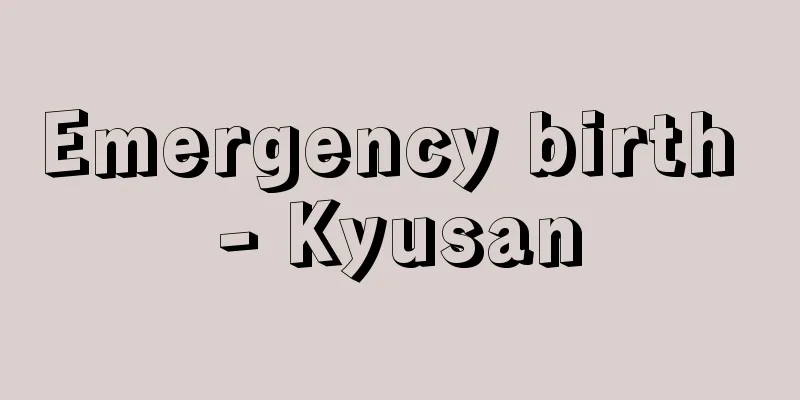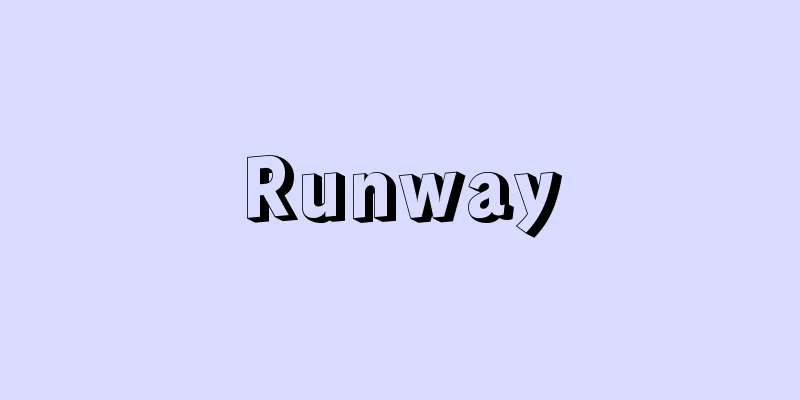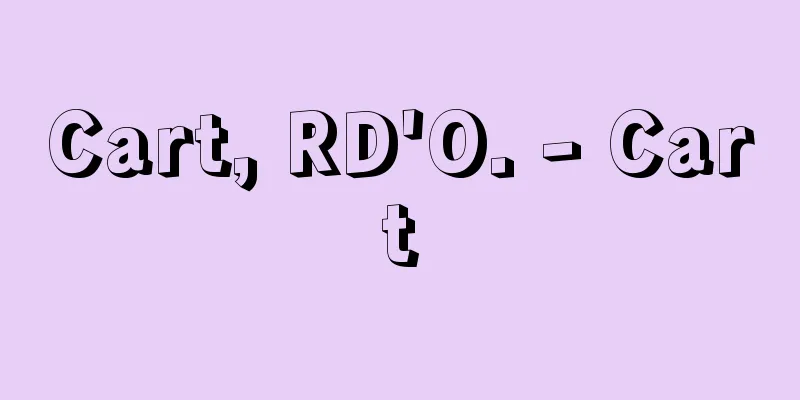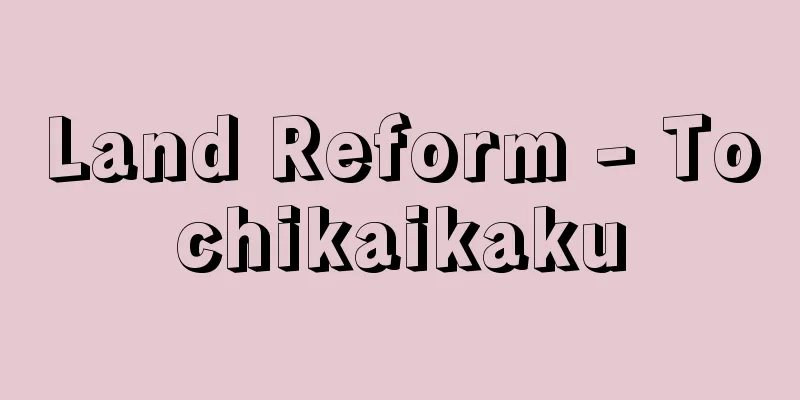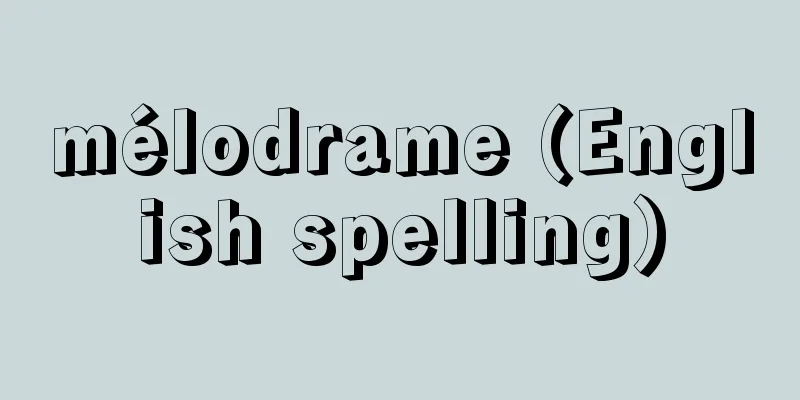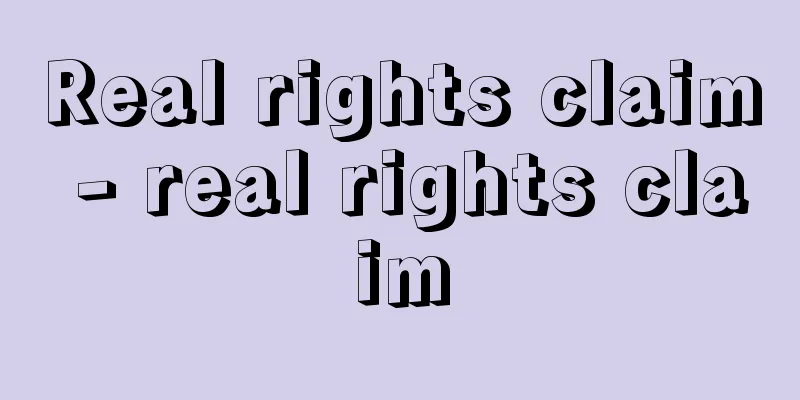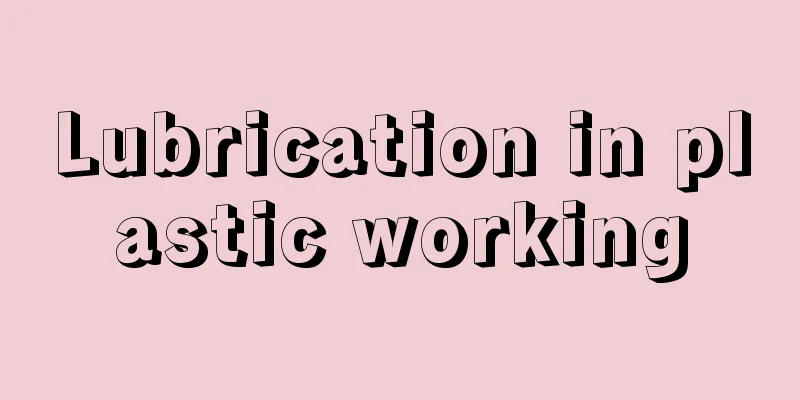Copyright - chosakuken (English) copyright
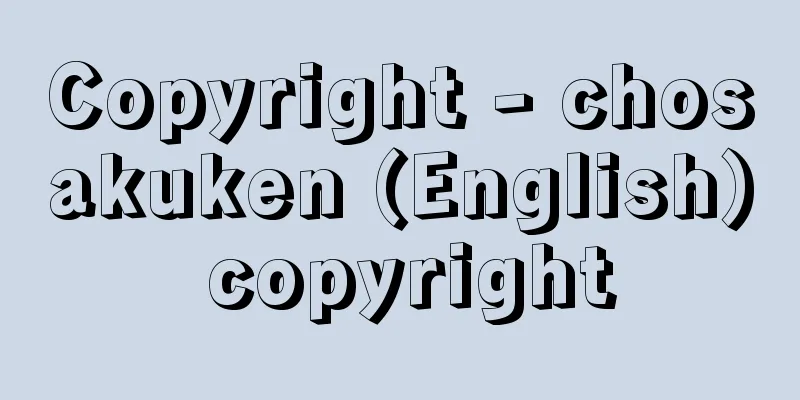
|
It is the right to have exclusive control over a work, and is a type of intangible property right (intellectual property right) along with industrial property rights (industrial property rights) such as patent rights and utility model rights. It is also called copyright. A work here refers to a creative expression of ideas or emotions that falls within the scope of literature, academia, art, or music, and specifically includes novels, scripts, lectures, and other literary works, musical works, dance or pantomime works, paintings, prints, sculptures, and other artistic works, architectural works, maps or drawings, charts, models, and other graphic works of an academic nature, cinematographic works, photographic works, and computer program works. Anyone who wishes to use another person's work must obtain permission from the copyright holder; using the work without permission constitutes copyright infringement and may be subject to penalties as well as injunctive relief and claims for damages from the copyright holder. [Masao Handa December 13, 2019] HistoryThe origin of Japan's copyright system can be traced back to the Copyright Act (old law) enacted in 1899 (Meiji 32). This law was drafted by Rentaro Mizuno and was enacted as a preparatory step for Japan's accession to the Berne Convention (1886). As such, its contents were in line with the Berne Convention in many ways and it was extremely innovative at the time. This old law was partially amended several times in response to the successive amendments to the Berne Convention, and it continued to exist until after the Second World War. However, the rapid progress of mechanical technology after the war brought about significant changes in the way copyrighted works were used, and the Berne Convention, which is the basis of Japan's copyright system, has also been amended many times since then. As a result, partial amendments were no longer sufficient to deal with these circumstances, and a fundamental reexamination was required. This is how the current Copyright Act (Law No. 48 of 1970) was born and came into effect on January 1, 1971 (Showa 46). Since its enactment, this law has been frequently amended to deal with issues such as record lending and the protection of computer programs and databases in the digital age, and remains in effect to this day. [Masao Handa December 13, 2019] Establishment of copyrightThere are two opposing views on when copyright is established. One is that copyright is established immediately when a work is created, which is called the non-formalism system. The other is that copyright does not arise when a work is created, but only when some form or procedure such as licensing, registration, deposit, or notification is followed, which is called the formalism system. Looking back at the history of copyright systems, every country started out with a formalism system, but has gradually shifted to a non-formalism system. The Berne Convention, an international regulation on copyright protection, adopted the non-formalism system, and currently the majority of countries in the world, including the United States and European countries, have adopted the non-formalism system. Japan has consistently followed the non-formalism system since the old law. The Berne Convention is a treaty for the international protection of copyrights, and the Universal Copyright Convention exists as an international symbol for copyright ownership under this treaty, the © symbol (a circled C). [Masao Handa December 13, 2019] The nature of copyright and its status in the legal systemThe world's legal systems regarding copyright (author's rights) are divided into two: the civil law system, centered on France and Germany, and the Anglo-American system, centered on the United Kingdom and the United States. In the civil law system, the author's rights are composed of the moral right, which protects the spiritual relationship between the author and the work, and copyright as a property right, while in the Anglo-American system, copyright is composed as a property right. The former is strongly recognized as a right to protect the creator (author) who is the creator of culture, while the latter is strongly recognized as a right that generates economic benefits. This difference is evident in the information society. European law, which values tradition and culture, and American law, which emphasizes industrial development, each of these ideas and values is reflected in the legal structure of the author's rights. Copyright in Japan is composed of the moral right of the author and copyright (property right), and the legal system can be said to be based on civil law, but in recent legislation and interpretations, industrial policy thinking has been strengthened. Moreover, under international law, authors' rights are considered human rights. The Universal Declaration of Human Rights of 1948, and more specifically the International Covenant on Economic, Social and Cultural Rights (ICCHR), one of the international human rights covenants adopted in 1966, stipulates the right to protection of the moral and economic interests deriving from academic, literary and artistic works (copyright). [Masahiro Miura December 13, 2019] Author's rightsWhen we talk broadly about the rights of authors, we include the right to protect the author's property interests and the right to protect the author's personal interests. Under current law, the former is called copyright and the latter is called the author's moral right, and both are recognized. However, the two differ in nature, and while the former is treated purely as a property right, the latter is recognized as a type of personal right that is personal and cannot be transferred. Copyright refers to the totality of rights given to authors according to the manner of use of their works, such as publishing and broadcasting. The law recognizes the following rights as derivatives of this right: reproduction rights, performance rights, performance rights, public transmission rights, oral rights, screening rights, distribution rights (only for cinematographic works), transfer rights (excluding cinematographic works), rental rights (excluding cinematographic works), exhibition rights (only for works of art and photography), translation rights, arrangement rights, film rights, and adaptation rights. Of these rights, the most basic and important is the right of reproduction. The right of reproduction is the right to reproduce a work in a tangible form by printing, photographing, recording, filming, and other methods, and includes the right to print a novel, photograph a picture, and record music on a tape or CD. Reproducing a work without the permission of the copyright owner is an infringement of the reproduction right, and ultimately a copyright infringement, which can be subject to criminal penalties, as well as claims for damages from the copyright owner and injunctions against use. Therefore, anyone who wishes to legally copy a copyrighted work must obtain permission to do so from the rights holder, and in exchange for this permission, the rights holder usually collects a certain license fee or royalties for the use of the copyrighted work. This is the same for rights other than the right to copy. For these reasons, copyright can be said to have the nature of a property right. On the other hand, three types of moral rights of authors are recognized: the right to publish (the right to decide whether to publish the work and, if so, the method and conditions), the right to display the author's name (the right to decide how the author's name will be displayed), and the right to maintain the integrity of the work (the right not to allow the content or title of the work to be changed or deleted without permission). These rights are recognized to protect the author's personality, such as his or her honor, and are therefore considered to be types of moral rights. [Masao Handa December 13, 2019] Principles and exceptions to authorshipThe rights of an author originally belong to the author who creates a work through the creation of the work (the creator principle). The moral rights of an author, which have the nature of a personal right, are personal and exclusive rights and therefore never leave the ownership of the author, but copyright is structured as a transferable property right and can be transferred to others, and the person to whom copyright is transferred from the author (creator) becomes the copyright owner (the copyright dualism principle). Incidentally, in the copyright monism principle, the rights of an author are structured as something that cannot be transferred, and copyright never leaves the ownership of the author and always remains with the author. Japan's copyright law does not strictly enforce the principle of creator ownership, and there are major exceptions to this rule. One of these is work made for hire. When a work created in the course of employment by a person working for a corporation (company) is based on the initiative of the corporation and is published under the name of the corporation, the corporation becomes the author (corporate work). However, this does not apply when there are other provisions in the contract or work rules. As a result, the corporation is considered to be the author, and the rights of the author, including the moral rights of the author, are originally vested in the corporation. The second exception is with regard to movie copyright. Theatrical films, which are the subject of the Copyright Act, involve many staff members in the production, making it difficult to identify the creator, and if multiple authors were to share the rights, this could cause problems with the distribution of the film, so it is stipulated that the copyright of a film belongs to the "filmmaker." With regard to movies, the emphasis is on protecting distribution. [Masahiro Miura December 13, 2019] Derivative WorksA new work created based on an existing work is called a derivative work. For example, works created by modifying a previous work (original work), such as translating a foreign language novel into Japanese, or adapting an original novel into a movie or a manga into a TV drama (adaptation), are protected as derivative works. Since the author of a prior work holds the right to translate, adapt, etc., permission from the author (copyright holder) is required when creating a derivative work. Since the author of the original work holds the same rights as the author of the derivative work, those who use the derivative work need permission from the copyright holder of the original work in addition to the permission from the copyright holder of the derivative work. Although the forms of expression of a novel expressed in words or sentences and a film which expresses the performance of actors in images are significantly different, if it is created based on an original work, it is considered a derivative work. If it is judged that the creation of a work was merely based on ideas or hints from an existing work, it is considered a new and separate work. [Masahiro Miura December 13, 2019] Copyright RestrictionsA copyrighted work belongs to the individual author who created it, but at the same time, it also has an aspect of being a cultural asset shared by the nation, so allowing the nation's citizens to freely use it within certain limits is essential for the development of the nation's culture, and since authors usually incorporate the cultural heritage of their predecessors in some way when creating their works, it should be considered that newly created works also have a natural obligation to be made available to all citizens after a certain time and made available for use by future generations. This fate of works is generally called the social nature of copyright, and each country imposes certain restrictions on copyright protection. Japan is no exception, and imposes restrictions in the following two areas. (1) Free use of copyrighted works In principle, anyone who wishes to use a copyrighted work must obtain permission from the copyright holder, but in certain cases, the law allows for use of the work without the copyright holder's permission. These include copying for personal use, copying in libraries, citations, inclusion in textbooks, copying for examination questions, copying for the visually impaired, non-profit performances, temporary recordings and filming for broadcasting, exhibitions by owners of artistic works, reprinting of editorials on current affairs, use in political speeches, and use for reporting on current events, and in many cases, users are obligated to indicate the source. (2) Copyright protection period The Berne Convention, an international copyright protection treaty to which Japan is a signatory, initially set the protection period at 30 years after the death of the author, and Japan followed suit, setting the protection period at 30 years after the death of the author. However, the treaty was amended in 1948 to set the minimum protection period at 50 years after the death of the author, and Japan also adopted a similar policy, setting the protection period at the time of the creation of the work for the life of the author and 50 years after his death, after which the copyright expires and anyone can use the work freely and free of charge. In addition, the protection period for film works was extended from 50 years after publication to 70 years after publication in 2003. Furthermore, at the same time as the Trans-Pacific Partnership (TPP) came into effect in December 2018, a revised Copyright Act was enacted to extend the protection period. As a result, the copyright protection period in Japan is, in principle, protected for 70 years after the death of the author, like the EU member states and the United States. [Masao Handa and Masahiro Miura, December 13, 2019] Neighboring rightsPerformers, phonogram producers, broadcasting organizations, and cable broadcasting organizations, who are not the creators of copyrighted works but play a role in communicating copyrighted works to the public, are granted exclusive rights (neighboring rights) equivalent to those of authors and are protected under the Copyright Act. This meets the protection standards of the Treaty for the Protection of Performers, etc., enacted in 1961. As with authors' rights, neighboring rights are created without formalities, and rights are created when a performance, the first recording on a phonogram, a broadcast, or a cable broadcast is performed, and the rights last for 70 years for performances and phonograms and 50 years for broadcasts (protection period). A performer is an actor, musician, singer, etc. who performs the act of staging, playing, singing, etc. of a copyrighted work. Performances also include those that are not the performance of a copyrighted work but have an artistic nature (such as acrobatics and magic tricks). Performers are granted rights such as recording rights, video recording rights, broadcasting rights, and cable broadcasting rights. The so-called "one chance principle" is adopted for the exercise of performers' rights, and in order to ensure the smooth distribution of recordings and videos, the performer's permission is required for broadcasting or communicating a performance to the public, recording or video recording a performance, and copying the performance. However, in principle, the performer's rights do not extend to the use of copies made with the performer's permission. Performers have claims against broadcasting companies when commercial records are used in broadcasts. In addition, performers have moral rights (right to display name and right to maintain integrity) regarding their own performances. In the Internet age, where a wide variety of copyrighted works such as music, films and videos are exchanged, the opportunities for infringement of the rights of not only authors but also performers has increased significantly, and in Europe in particular, institutional reforms are being made to strengthen the protection of their legal status. A phonogram producer is a person who first creates a master record by recording a performer's singing or playing on a master tape. A phonogram producer holds neighboring rights such as the right of reproduction and the right to make available for transmission. A broadcasting organization refers to broadcasting organizations such as NHK and private broadcasters. The subject of protection under the rights of broadcasting organizations is not the act of broadcasting a copyrighted work itself, but the audio and video in the broadcast that is the subject of recording or filming. A 1986 amendment to the Copyright Act added cable broadcasting organizations. Broadcasting organizations and cable broadcasting organizations hold neighboring rights such as the right of reproduction and the right to make available for transmission. [Masahiro Miura December 13, 2019] Addressing new issuesMeasures for renting records and CDsRecord rental stores, which first appeared in 1980, grew rapidly thanks to the support of young people, and within a few years there were more than a thousand stores nationwide. (Then, in the late 1980s, when CDs appeared in 1982, players became cheaper, and production numbers exceeded that of records, and record rental stores became CD rental stores. Under the Copyright Act, a "record" is defined as a "thing that contains fixed sound," such as a phonograph record, recording tape, LP record, or CD, and the business of renting out such things is called a "record rental business.") The record rental business was characterized by its business exploiting a blind spot in the law, namely, that under the Copyright Act, the tape recordings made by customers of records are legal as copies for private use (Article 30 of the Copyright Act), and because the record rental stores themselves do not make the copies, there is no infringement of the reproduction right, and there is no infringement of the Copyright Act anywhere. The growth of the record rental business resulted in a significant decline in record sales, and rights holder groups therefore strongly desired legislation to combat record rentals. In response, the Copyright Act was amended in 1984 to recognize the right to rent as a new right derived from copyright. As a result, record rental (CD rental) businesses could no longer rent records or CDs without the permission of the copyright holder. However, non-profit and free rentals such as those in libraries and audiovisual libraries do not require permission. In addition, the lending of books and magazines was exempt from the law because the rental business had been freely operated for many years, but due to the expansion of the comic rental business, the lending right now extends to rental businesses that charge a fee. [Masao Handa and Masahiro Miura, December 13, 2019] Copyright in the Digital AgeThe improvement and spread of computer technology in recent years has been truly remarkable. In particular, computer programs, which are the core of computer technology, were previously treated as accessories to computers, but are now treated as highly valuable creative works that are separate and independent from computers. In response to this situation, the importance of legally protecting computer programs has gradually been recognized, and many foreign countries are moving in the direction of protecting them under copyright law. In response to this international trend, a partial amendment to the Copyright Act in 1985 made computer programs protected by the Copyright Act. This amendment first clarified the definition of a program and added programs to the examples of works. Then, taking into account the characteristics of programs, it stipulated the relaxation of the requirements for corporate works, specified exemptions from the right of integrity, and established a new system for registering the date of creation of computer program works. It also stipulated that the use of certain programs would be considered a copyright infringement. On the other hand, in today's world where a huge amount of diverse information is being supplied, the significance of databases is becoming increasingly important. In order to promote the construction and utilization of these databases, it has become essential to provide legal protection to database creators and to enable their smooth use. In light of this situation, the Copyright Act was amended in 1986 to newly protect databases as works of authorship, and the associated regulations are currently being developed. Furthermore, in order to cope with the increasing use of the Internet for the transmission of information, the existing broadcasting rights and cable transmission rights were integrated in 1996, and the right of making available for transmission, which allows uploading to a server computer and automatically transmitting to the public, was added, thus creating a new right of public transmission in order to meet the demands of the networked age. Since the latter half of the 1990s, there has been an increase in the number of cases where music data compressed using MP3 (a technology that compresses data to one-tenth its original size without degrading the audible sound quality) is distributed over the Internet (music distribution services). However, not only does the reproduction right come into play when copying music data for distribution, but the transmittable right also comes into play when uploading this data to a server, so it must be noted that prior permission from the rights holder is required. [Masao Handa December 13, 2019] Introduction of a compensation system for private recordingUnder Japan's Copyright Law, copying copyrighted works at home is permitted, so recording CDs or videos using one's own recording equipment does not constitute copyright infringement. However, with the emergence of superior recording equipment that does not degrade sound or image quality, users have been able to easily use copyrighted works for personal use by using CD rental stores or recording broadcast programs. As a result, sales of CDs and other media have dropped significantly, causing great economic disadvantages for rights holders. To address this phenomenon and to alleviate the disadvantages of rights holders, a legal amendment was made in 1992 (Heisei 4) requiring those who record or record using specific digital equipment to pay a certain amount of compensation to rights holders. This is called the private recording compensation system. Specifically, the system is adopted in which rights holders' organizations request a certain amount of compensation from manufacturers of recording and recording equipment and materials (such as audio tapes), and the manufacturers pass on the amount paid to the purchasers of the equipment by adding it to the sales price of the equipment. This method has already been adopted in many countries, and Japan is following suit. [Masao Handa December 13, 2019] Copyright brokerageAs the ways in which copyrighted works are used have become more diverse, users of copyrighted works have expanded from traditional publishers to include record producers, broadcasting companies, and owners of social venues, and have become a wide range of businesses. This has made it practically impossible for copyright holders to enter into copyright use contracts with many users individually, and it has become a hassle for users to find copyright holders one by one and enter into contracts with them, which has become particularly inconvenient when it is urgent. The best way to solve this situation is for an organization to appear between copyright holders and users, to receive commissions from many copyright holders to exercise copyrights, to centrally manage them, and to negotiate with users individually. In this way, intermediary organizations have been established one after another in various countries. In the past, in Japan, the "Copyright Intermediary Business Law (Intermediary Business Law)" (Law No. 67 of 1939) required that anyone who engaged in intermediary business only for novels, screenplays, and music must obtain permission from the Commissioner of the Agency for Cultural Affairs. As a result, the Japanese Society for Rights of Authors, Composers and Publishers, the Japan Literary Copyright Protection Alliance, and the Japan Scriptwriters Association and Japan Scenario Writers Association were authorized by the Commissioner of the Agency for Cultural Affairs to operate in the field of music, literature, and scenarios, respectively. Thus, up until now, the above four organizations had a monopoly on copyright intermediation work, but voices were raised that introducing a competitive principle into this field would be more beneficial for revitalizing the market in the current age of digitalization and networking, and in November 2000, the above-mentioned Intermediary Business Law was abolished and a new "Copyright Management Business Law" (Law No. 131 of 1999) was enacted (effective from October 2001). In order to encourage new entrants, this law changed the system of license holders to a registration system, and changed the approval system for usage fees to a notification system. [Masao Handa December 13, 2019] Restricting circumvention of technological protection measuresWith the rapid advancement of technology in recent years, it has become possible to make large quantities of high-quality copies, and so in many cases copies of video software and other materials are equipped with copy protection (copy guard) to prevent unauthorized copying. However, people have begun to manufacture and sell devices that circumvent this protection, encouraging unauthorized copying. As a result, the Copyright Law was revised in 1999 to allow penalties to be applied to those who engage in such acts. [Masao Handa December 13, 2019] Restrictions on removal of rights management informationAdvances in network technology have made it possible to attach rights management information to copyrighted works, which can then be used to understand usage and handle rights processing. However, a 1999 amendment to the law added restrictions, including penalties, to prevent such rights management information from being intentionally removed or tampered with. [Masao Handa December 13, 2019] Downloading illegal copiesSince authors (copyright holders) have the right to transmit to the public, in principle, permission from the copyright holder is required to distribute other people's copyrighted works on the Internet. There are a variety of copyrighted works on the Internet, including not only legal but also illegal music and videos. In the past, it was permitted to download (copy) these works and use them privately if it was for personal use, but the 2009 amendment to the Copyright Law made it illegal to download works knowing that they were illegally uploaded, even if it was for personal use. Furthermore, the 2012 amendment to the Copyright Law imposed criminal penalties (imprisonment of up to two years or a fine of up to 2 million yen, or both). However, in response to the worsening situation of copyright infringement on the Internet, a review of the scope of the illegal downloading, which is currently limited to recording and filming of music, videos, etc., is being considered. Blocking of so-called pirated sites is also being discussed. [Masahiro Miura December 13, 2019] Anti-Piracy Filming ActAs video cameras have become smaller and more powerful, it has become common to record movies being shown on movie theater screens and then upload the footage to the Internet, sometimes even before the general public is allowed to see them. In response to this, the Act on the Prevention of Filming of Unauthorized Recording of Movies (Act No. 65 of 2007) was enacted (enforced in August 2007) with the aim of preventing such acts and promoting film culture and the healthy development of the film industry. Until then, it was not prohibited to record movies being shown in movie theaters for personal use, but the Act on the Prevention of Filming of Unauthorized Recording of Movies makes it a violation of the right of reproduction, not a form of copying for personal use. Furthermore, anyone who records unauthorisedly within eight months of the first screening of a movie will be subject to criminal penalties (up to 10 years in prison or a fine of up to 10 million yen, or both). [Masahiro Miura December 13, 2019] Electronic Publishing RightsWith the advancement of the digital network environment, while copyrighted works have progressed into digital books, these illegal copies have been distributed on the Internet, and copyright infringement has increased. Therefore, the Copyright Act was revised in 2014 with the aim of reviewing the publication rights system, which is intended to only publish in print media, and to establish publication rights that correspond to electronic books, expanding the concept of publication rights. Before the revision, the publication rights were intended for publication as documents or illustrations, but with the revision of the Copyright Act, the contents of the publication rights have also been expanded to include the rights to be reproduced as electronic data recorded on a recording medium, and the right to transmit the copies on the Internet. Publishing rights are exclusive rights established in a publishing agreement between the copyright holder (author) and the publisher, and their effect only occurs when there is an agreement between the parties. [Miura Masahiro December 13th, 2019] "Abe Koji, Copyright and its Surroundings" (1983, Nihon Hyoronsha)" ▽ "Misaka Taro, Copyright - From the Publishing Site" (1984, Publishing Newssha)" ▽ "Copyright Know-How, 5th Edition (1995, Yuhikaku)" ▽ "Revised Edition of Copyright Encyclopedia, Edited by Handa Masao and Montani Nobuo" (1995, Yuhikaku)" ▽ "Revised Edition of Copyright Information Center (1999, Publishing Newssha)" ▽ "Yoshida Daisuke, Chapter 10 Chapters to Clear Copyright (1999, Publishing Newssha)" ▽ "Tamura Yoshiyuki, Overview of Copyright Law, 2nd Edition (2001, Yuhikaku)" ▽ "Sakuka Fumio, Copyright Law - Fundamentals and Applications" 2nd Edition (2005, Invention Association)" ▽ "Fundamentals of Copyright Law" (2005, Economic and Industrial Research Council)" (2005, Economic and Industrial Research Council) " (2009, Keiso Shobo)" (2009, Keiso Shobo)" (2009, Overview of Copyright Law by Handa Masao, Overview of Copyright Law, 14th Edition (2009, Hogaku Shoin)" (2009, Hogaku Shoin)" (2008, Introduction to Copyright Law by Handa Tetsuo, Introduction to Copyright Classroom by Ozaki Tetsuo (Heibonsha Shinsho)" (Heibonsha Shinsho)" (Fukui Kensaku, "What is Copyright? What is Culture and the Future of Creation" (Shueisha Shinsho)" [Reference Items] | | | | | Copyright Association | | | |Source: Shogakukan Encyclopedia Nipponica About Encyclopedia Nipponica Information | Legend |
|
著作物を排他的に支配しうる権利のことで、特許権、実用新案権などの工業所有権(産業財産権)と並んで、無体財産権(知的財産権)の一種である。コピーライトともいう。ここにいう著作物とは、思想または感情を創作的に表現したものであって、文芸、学術、美術または音楽の範囲に属するものを指し、具体的には小説・脚本・講演その他の言語の著作物、音楽の著作物、舞踊または無言劇の著作物、絵画・版画・彫刻その他の美術の著作物、建築の著作物、地図または学術的な性質を有する図面・図表・模型その他の図形の著作物、映画の著作物、写真の著作物、プログラムの著作物などがこれにあたる。 他人の著作物を利用しようとする者は著作権者の許諾を受けなければならず、無断で利用するときは著作権の侵害となり、罰則の適用を受けるほか、著作権者から差止請求や損害賠償請求を受けることになる。 [半田正夫 2019年12月13日] 沿革日本の著作権制度は、1899年(明治32)に制定された著作権法(旧法)にその起源を求めることができる。これは水野錬太郎(れんたろう)の起草にかかるもので、直接にはベルヌ条約(1886)加盟の準備工作として制定されたものであるため、内容的にはベルヌ条約と多くの点で符合しており、当時としてはきわめて斬新(ざんしん)なものであった。この旧法は、その後ベルヌ条約の相次ぐ改正に応じて数次にわたる部分的修正を施して、第二次世界大戦後に至るまでその命脈を保ってきた。しかし、戦後の機械技術の急速な進歩は著作物の利用方法に著しい変化をもたらし、他方、日本の著作権制度の基調となっているベルヌ条約もその後何度も改正されている。そのため、これらの情勢に対処するためにはもはや部分的修正では足りず、根本的な再検討が必要となった。こうして生まれたのが現行の著作権法(昭和45年法律第48号)であり、1971年(昭和46)1月1日に施行されている。この法律は、制定後、貸しレコード問題、コンピュータ・プログラムやデータベースの保護などデジタル化時代に対応するため頻繁に部分改正を加え、今日に至っている。 [半田正夫 2019年12月13日] 著作権の成立著作権がいつ成立するかについては、二つの考え方の対立がある。一つは、著作物が創作された時点でただちに著作権が成立するという考え方であり、これを無方式主義とよんでいる。もう一つは、著作物が成立するだけでは著作権は発生せず、免許、登録、納本、届出などのなんらかの方式または手続をとることによって初めて著作権が成立するという考え方であり、これを方式主義とよんでいる。著作権制度の歴史を振り返れば、最初はどこの国でも方式主義でスタートしたが、やがて無方式主義に転換するようになってきている。著作権保護に関しての国際的規制であるベルヌ条約が無方式主義を採用したこともあり、現在ではアメリカやヨーロッパの各国をはじめ、世界の大多数の国が無方式主義を採用している。日本では旧法以来、一貫して無方式主義がとられている。 ベルヌ条約と並んで著作権を国際的に保護するための条約として万国著作権条約がある。この条約に基づく著作権所有を表す国際的記号として©(丸C)の記号がある。 [半田正夫 2019年12月13日] 著作権の性質と法体系上の位置づけ著作権(著作者の権利)に関する世界の法体系は、フランス、ドイツを中心とする大陸法体系と、イギリス、アメリカを中心とするアングロ・アメリカ法体系に二分される。大陸法体系では、著作者の権利は、著作者とその著作物の精神的な関係を保護する著作者人格権と、財産的権利としての著作権によって構成されているのに対し、アングロ・アメリカ法体系では、著作権(コピーライト)は財産権として構成されている。前者は、文化の創造者である創作者(著作者)を保護する権利であるという認識が強いのに対し、後者は、もっぱら経済的利益を生み出す権利であるという認識が強いといえる。情報社会においてその違いが顕著となっている。伝統や文化を重んじるヨーロッパ法、産業の発達を重視するアメリカ法、それぞれの思想や価値観が著作者の権利の法律構成に反映されている。 日本の著作権は、著作者人格権と著作権(財産権)で構成されており、法体系としては大陸法系であるといえるが、近年の立法や解釈では産業政策的な考え方が強くなっている。 また、国際法上、著作者の権利は人権として位置づけられている。1948年の世界人権宣言において、より具体的には1966年に採択された国際人権規約の一つ「経済的、社会的及び文化的権利に関する国際規約(A規約)」において、学術的、文学的および芸術的作品により生ずる精神的・経済的利益について保護を受ける権利(著作権)が定められている。 [三浦正広 2019年12月13日] 著作者の権利広く著作者の権利というとき、そこには著作者の財産的利益を保護する権利と、著作者の人格的利益を保護する権利とが包含されている。現行法はこのうち前者を著作権、後者を著作者人格権とよび、両者ともこれを承認している。だが両者はその性格を異にし、前者は純粋に財産権として取り扱われるのに対し、後者は人格権の一種として一身専属性が認められ、その譲渡が禁止されている。 著作権は、出版・放送などの著作物利用の態様に応じて著作者に与えられる権利の総体をいい、この権利から派生的に生ずる権利として、法は、複製権、上演権、演奏権、公衆送信権、口述権、上映権、頒布権(映画著作物のみ)、譲渡権(映画著作物を除く)、貸与権(映画著作物を除く)、展示権(美術および写真の著作物のみ)、翻訳権、編曲権、映画化権、翻案権などの権利を承認している。これらの権利のなかでもっとも基本的で重要な権利は複製権である。複製権とは、印刷、写真、録音、録画などの方法によって著作物を形のあるものにそのまま再製する権利をいい、小説を印刷したり、絵を写真に撮ったり、音楽をテープやCDに録音したりする行為に及ぶ権利のことである。著作物を著作権者に無断で複製すると複製権の侵害、ひいては著作権の侵害となり、刑事罰の適用を受けるほか、著作権者から損害賠償の請求を受けたり、使用の差止請求を受けたりする。したがって適法に著作物を複製しようとする者は権利者から複製の許諾を受けることが必要であり、権利者は許諾と引換えに一定の許諾料あるいは著作物使用料を徴収するのが普通である。これは複製権以外の権利の場合も同様である。このようなことから、著作権は財産権としての性質をもっているといえる。 一方、著作者人格権としては、公表権(著作物を公表するか否か、公表するとした場合にその方法および条件をどうするかについて決定する権利)、氏名表示権(著作者の氏名の表示をどのようにするかを決定する権利)、同一性保持権(著作物の内容や題号をかってに変えたり、削ったりさせない権利)の3種を承認している。これらの権利は著作者の名誉など人格を保護するために認められた権利であるところから、人格権の一種と考えられる。 [半田正夫 2019年12月13日] 創作者主義の原則と例外著作者の権利は、著作物の創作により、創作者である著作者に原始的に帰属する(創作者主義)。人格権としての性質を有する著作者人格権は、一身専属的な権利であるから、著作者のもとから離れることはないが、著作権は譲渡性を有する財産権として構成されているので、他者に移転することが可能であり、著作者(創作者)から著作権の移転を受けた者が著作権者となる(著作権二元論)。ちなみに、著作権一元論では、著作者の権利は譲渡することができないものと構成されることとなり、著作者のもとから著作権が離れることはなく、つねに著作者のもとにとどまる。 日本の著作権法は、この創作者主義が徹底されておらず、大きな例外が規定されている。その一つが職務著作である。法人(企業)等の業務に従事する者によって職務上作成される著作物が、法人等の発意に基づくものであり、法人等の著作名義で公表される場合、その法人が著作者となる(法人著作)。ただし、契約や勤務規則により別段の定めがある場合はこの限りではない。これにより、法人が著作者であるとみなされ、著作者人格権を含めて、著作者の権利は法人に原始的に帰属することとなる。 二つ目の例外は、映画の著作権についてである。著作権法が想定している劇場用映画は、多数のスタッフが製作に関与するため、創作者である著作者を特定することが容易ではなく、また、複数の著作者が権利を共有することとなると、映画の流通に支障をきたすおそれがあることから、映画の著作権は「映画製作者」に帰属することが定められている。映画については、流通の保護に重点が置かれている。 [三浦正広 2019年12月13日] 二次的著作物既存の著作物に基づいて創作される新たな著作物を二次的著作物という。たとえば、外国語の小説を日本語に翻訳する場合や、原作小説を映画化したり、漫画をテレビドラマ化したりする場合(翻案)のように、先行する著作物(原著作物)を改変して創作される著作物は二次的著作物として保護を受ける。 先行著作物の著作者は、翻訳権、翻案権等を有しているので、二次的著作物を作成する場合には著作者(著作権者)の許諾が必要である。原著作物の著作者は、二次的著作物の著作者が有する権利と同一の権利を有することとなっているので、二次的著作物を利用する者は、二次的著作物の著作権者の利用許諾に加えて、原著作物の著作権者の利用許諾も必要となる。 文字や文章で表現されている小説と、俳優の実演を映像として表現する映画とでは、その表現形式は著しく異なっているが、原著作物をベースとして創作されている場合は二次的著作物となる。著作物の創作に際して、既存の著作物から創作のアイデアやヒントを得ているにすぎないと判断される場合、それは別個独立した新たな著作物となる。 [三浦正広 2019年12月13日] 著作権の制限著作物は、それを作成した著作者個人のものであると同時に、国民共通の文化財産としての一面を有するものであるから、一定の範囲内での自由利用を国民に認めることは、その国の文化の発展にぜひとも必要なことであるし、また著作者は著作物の作成にあたってなんらかの形で先人の文化遺産を摂取しているのが普通であるから、新たに作成された著作物も、一定の時期以後は国民すべてに開放され、後世の人々の利用に供されなければならない義務が当然に課せられているとみるべきである。このような著作物のもつ宿命を一般に著作権の社会性とよんでおり、各国とも著作権の保護に一定の制限を加えている。日本の場合もその例外ではなく、次の二つの面から制限を加えている。 (1)著作物の自由利用 著作物を利用しようとする者は著作権者から使用の許諾を受けるのを原則とするが、一定の場合には著作権者に無断で利用することが法によって認められている。これには、私的使用のための複製、図書館における複製、引用、教科書への掲載、試験問題としての複製、視覚障害者のための複製、営利を目的としない上演、放送のための一時的な録音・録画、美術著作物の所有者による展示、時事問題に関する論説の転載、政治上の演説などの利用、時事の事件の報道のための利用などがあり、その多くの場合に利用者に対して出所明示の義務が課せられている。 (2)著作権の保護期間 日本が加盟している著作権の国際的保護条約としてのベルヌ条約は、当初、保護期間を著作者の死後30年としていたため、日本もこれに従い著作者の死後30年としていた。しかし、同条約は1948年の改正により著作者の死後50年を保護の最低期間としたため、日本もこれにあわせ、著作物の創作時から著作者の生存期間およびその死後50年を保護期間とし、以後、著作権は消滅し、だれでも無料で自由に利用できるものとした。また、映画著作物の保護期間については、2003年(平成15)に従来の公表後50年から公表後70年に延長された。さらに、2018年12月、環太平洋経済連携協定(TPP)の発効と同時に、保護期間を延長する改正著作権法が施行された。これにより、日本の著作権の保護期間は、EU加盟国やアメリカと同様に、原則として著作者の死後70年まで保護されることとなっている。 [半田正夫・三浦正広 2019年12月13日] 著作隣接権著作物の創作者ではないが、著作物を公衆に伝達する役割を果たしている実演家、レコード製作者、放送事業者および有線放送事業者は、著作者の権利に準じた排他的な権利(著作隣接権)が付与され、著作権法上の保護を受けている。これは、1961年(昭和36)に成立した実演家等保護条約の保護基準をみたすものである。著作隣接権は、権利の発生については著作者の権利と同様に無方式主義が採用され、実演、レコードへの最初の録音、放送および有線放送がそれぞれ行われたときに権利が発生し、実演、レコードは70年、放送は50年間存続する(保護期間)。 実演家とは、俳優、演奏家、歌手などのように、著作物の上演、演奏、歌唱などの行為(実演)を行う者をいう。実演には、著作物を演じるものでなくても芸能的な性質を有するもの(曲芸、手品など)も含まれる。実演家には録音権、録画権、放送権、有線放送権等の権利が認められている。実演家の権利行使については、いわゆる「ワンチャンス主義」という考え方が採用され、録音物・録画物の円滑な流通を確保するために、実演の放送や公衆への伝達、実演の録音・録画およびその複製には実演家の許諾を必要とするが、いったん実演家の許諾を得て作成された複製物の利用については、原則として実演家の権利は及ばない。実演家は、商業用レコードが放送において使用される場合に、放送事業者に対する請求権を有している。さらに、実演家は、自己の実演について実演家人格権(氏名表示権・同一性保持権)を有する。 音楽、映画や動画などさまざまな著作物が行き交うインターネット時代において、著作者だけではなく、実演家の権利が侵害される機会が著しく増加していることから、とりわけヨーロッパでは、その法的地位の保護強化に向けた制度改革が行われている。 レコード製作者とは、実演家による歌唱や演奏をマスターテープに録音するなどして最初にレコード原盤を作成した者をいう。レコード製作者は、著作隣接権として複製権、送信可能化権等の権利を有する。放送事業者とは、NHKや民間放送などの放送機関をいう。放送事業者の権利による保護の対象は、著作物の放送という行為自体ではなく、録音・録画の対象となる放送における音声および映像である。1986年の著作権法改正により有線放送事業者が新たに加えられた。放送事業者および有線放送事業者は、著作隣接権として複製権、送信可能化権等の権利を有する。 [三浦正広 2019年12月13日] 新たな問題への対応貸しレコード・レンタルCD対策1980年(昭和55)に出現した貸しレコード店は、若年層の支持を得て急成長し、数年後には全国で千数百店にまで達する勢いとなった。(その後1982年にCDが登場、プレーヤーが低価格になり生産枚数がレコードを上回った1980年代後半以降、貸しレコード店はレンタルCD店になっていった。著作権法上は、「レコード」を蓄音機用音盤、録音テープ、LPレコード、CDなど「音を固定したもの」と定義し、それらを貸し出す業種を「貸しレコード業」としている)。貸しレコード業は、著作権法上、その利用者によるレコードのテープ録音については私的使用のための複製(著作権法第30条)として適法であり、また、貸しレコード店も自ら複製しているわけではないので複製権の侵害とならず、どこにも著作権法の侵害行為は存在しないという法の盲点をついた商売であったところに特徴があった。貸しレコード業の発展はレコードの売上げの大幅な減少という結果を招来し、そのため権利者側団体は貸しレコード対策のための立法化を強く希望した。これを受けて1984年の著作権法一部改正により、著作権から派生する権利の一つとして新たに貸与権が認められるに至った。この結果として、以後貸しレコード(レンタルCD)業を行う者は、著作権者の許諾を得なければレコードやCDなどの貸与をすることはできなくなった。ただし、図書館、視聴覚ライブラリーにおける貸与のような非営利かつ無料の貸与は、許諾を得る必要はない。また書籍・雑誌の貸与については、貸本業が長年自由に行われてきたという経緯から適用除外とされてきたが、コミック貸本業の拡大により、現在では有償の貸本業には貸与権が及ぶこととなっている。 [半田正夫・三浦正広 2019年12月13日] デジタル化時代と著作権近年におけるコンピュータ技術の改良普及は実に目覚ましいものがある。とくにその中核となるコンピュータ・プログラムは、従来コンピュータの付属物として扱われていたが、現在ではコンピュータから分離独立した高い価値をもった創作物として扱われるようになった。このような状況に対応して、コンピュータ・プログラムを法的に保護することの重要性がしだいに認識されるようになり、諸外国においてはこれを著作権法によって保護する方向が大勢となっている。そこで、このような国際的動向を踏まえて、1985年の著作権法の一部改正により、コンピュータ・プログラムは著作権法で保護されることになった。ここでは、まずプログラムの定義を明らかにするとともに、著作物の例示にプログラムを加え、ついで、プログラムの特質を考慮して、法人著作の要件の緩和、同一性保持権の適用除外の明記、プログラム著作物の創作年月日の登録制度の新設などを規定し、さらに一定のプログラムの使用を著作権侵害とみなす旨を定めている。 また一方、多様な情報が大量に供給される現代においては、データベースのもつ意義がきわめて大きくなりつつある。そしてこれらデータベースの構築、活用の促進などを図るにあたっては、データベース作成者を法律上保護するとともに、その円滑な利用を可能にすることが不可欠となってきた。このような情勢を踏まえて、1986年に著作権法の一部が改正され、新たにデータベースが著作物として保護されることになり、それに伴う規定の整備が行われている。 また、インターネットによる情報の伝達が活発になるに伴い、これに対処するため1996年(平成8)に従来の放送権と有線送信権を統合し、さらにこれに加えサーバーコンピュータにアップロードし、自動的に公衆に送信できる送信可能化権を追加し、新たに公衆送信権を創設してネットワーク化の時代要請にこたえている。 1990年代後半ごろから、MP3(聴覚上の音質を劣化させずにデータを10分の1に圧縮する技術)によって圧縮された音楽データがインターネットによって配信されるケース(音楽配信サービス)が増えてきたが、配信のため音楽データを複製する際に複製権が働くことはもちろん、これをサーバにアップロードすることについても送信可能化権が働くことになるので、権利者の事前許諾が必要であることに注意しなければならない。 [半田正夫 2019年12月13日] 私的録音・録画に対する補償金制度の導入日本の著作権法では、家庭内における著作物の複製は自由とされているため、自己所有の録音・録画機器を使用してCDやビデオなどを録音・録画することは著作権の侵害とはならない。しかし、音質や画質の劣化しない優れた録音・録画機器が登場するにつれ、CDレンタル店の利用や放送番組の録音・録画などの方法によって、利用者は容易に著作物を私的に利用できるようになった。その結果として、CDなどの売上げの大幅な減少により大きな経済上の不利益が権利者側に生ずるようになってきた。このような現象に対処し、権利者側の不利益を救済するため、1992年(平成4)の法改正で、新たにデジタル方式の特定機器による録音・録画を行う者は権利者に対して一定の補償金を支払う義務を負うこととなった。これを私的録音録画補償金制度という。具体的には、権利者側の団体が録音・録画機器および機材(録音テープなど)のメーカーに対して一定の補償金を請求し、メーカーは支払った分を機器や機材の販売価格に上乗せしてこれの購入者に転嫁する方式が採用されている。この方式は多くの国でもすでに採用されており、日本もこの例にならったものである。 [半田正夫 2019年12月13日] 著作権の仲介業務著作物の利用方法が多岐にわたるにつれ、著作物利用者も従来の出版者に加えて、レコード製作者、放送事業者、社交場経営者など広範な業種に及ぶようになった。こうなると、著作権者が多くの利用者と個別的に著作物利用契約を結ぶことは実際上不可能となり、また利用者側にしても著作権者をいちいち探し当てて契約を結ぶことは煩瑣(はんさ)であって、とくに急ぎの場合にはまにあわないという不便さが目だって多くなってきた。このような事態を解決する最良の方法は、著作権者と利用者との中間にあって、多数の著作権者から著作権行使の委託を受けてこれを集中的に管理し、利用者側との個別交渉に応ずるという機関の登場である。このようにして各国では相次いで仲介業務機関が成立するに至った。かつて日本でも、「著作権ニ関スル仲介業務ニ関スル法律(仲介業務法)」(昭和14年法律第67号)により、小説・脚本・音楽についてのみ仲介業務を行う者は文化庁長官の許可を受けなければならないことになっていた。その結果、音楽については日本音楽著作権協会、文芸については日本文芸著作権保護同盟、シナリオについては日本脚本家連盟と日本シナリオ作家協会がそれぞれ文化庁長官の許可を受けて活動していた。このようにこれまでは、前記4団体が著作権仲介業務をいわば独占していたが、ここに競争原理を導入することのほうがデジタル化、ネットワーク化の現在、市場の活性化にとって望ましいとの声があがるようになり、2000年(平成12)11月、前記の仲介業務法を廃止し、新たに「著作権等管理事業法」(平成12年法律第131号)が成立するに至った(2001年10月より施行)。この法律では、新規参入を促すために管理業務を行う者を従来の許可制から登録制に切り換え、使用料金の認可制を届け出制に変更するなどの改正を行っている。 [半田正夫 2019年12月13日] 技術的保護手段の回避の規制近年の急速な技術の進展に伴い、大量かつ高品質な複製が可能となっているため、ビデオソフトなどの複製物には無断複製を防止するためコピープロテクション(コピーガード)をつけている場合が多いが、これを回避する装置を製作して販売する者が現れ、無断複製を助長するに至っている。そこで1999年(平成11)の著作権法改正でこのような行為を行った者に対して罰則の適用を認めることになった。 [半田正夫 2019年12月13日] 権利管理情報の除去等の規制ネットワーク技術の進展により、著作物に権利管理情報を付して、これによって利用状況の把握や権利処理を行うことができるようになっているが、このような権利管理情報が故意に除去されたり、改竄(かいざん)されたりしないよう、1999年の法改正では罰則を科するなどの規制を加えることとした。 [半田正夫 2019年12月13日] 違法複製物のダウンロード著作者(著作権者)は公衆送信権を有しているので、他人の著作物をインターネット上に配信する場合は、原則として著作権者の許諾が必要である。ネット上には、適法なものだけではなく、違法な音楽や映像などさまざまな著作物が流れている。かつては、個人的に利用する場合であれば、これらの著作物をダウンロード(複製)して私的に利用することは許されていたが、2009年の著作権法改正により、違法にアップロードされている著作物であることを知りながらダウンロードする場合は、私的に利用する場合であっても認められなくなった。さらに、2012年の著作権法改正では刑事罰が科されることになった(2年以下の懲役か200万円以下の罰金、またはその両方)。しかし、その後もインターネット上の著作権侵害が深刻化している状況を受けて、現在は音楽、映像等の録音・録画に限定されているダウンロード違法化について、その対象範囲の見直しが検討されている。いわゆる海賊版サイトに対するブロッキングも議論されている。 [三浦正広 2019年12月13日] 映画盗撮防止法ビデオカメラの小型化、高性能化により、映画館のスクリーンに上映されている映画を撮影し、場合によっては一般公開より前に、その映像をインターネット上に流出させる行為が横行したことを受けて、このような行為を防止し、映画文化の振興および映画産業の健全な発展を目的とする見地から、映画盗撮防止法(平成19年法律第65号)が制定された(2007年8月施行)。それまでは、個人的に利用する場合であれば映画館において上映中の映画を撮影することは禁止されてはいなかったが、映画盗撮防止法では、映画の盗撮は、私的使用のための複製には該当せず、複製権の侵害となる。さらに、最初の上映の日から8か月以内に盗撮を行った者には刑事罰(10年以下の懲役か1000万円以下の罰金、またはその両方)が科されることになっている。 [三浦正広 2019年12月13日] 電子出版権デジタル・ネットワーク環境の進展に伴い、著作物の電子書籍化がすすむ一方で、それらの違法複製物がインターネット上で流通し、著作権の侵害が増大している。そこで、従来の紙媒体による出版のみを対象とした出版権制度を見直し、電子書籍に対応した出版権の整備を行うという趣旨のもとで2014年に著作権法が改正され、出版権の概念が拡大された。改正前の出版権は、文書または図画として出版する場合を対象としていたが、著作権法改正により、出版権の内容は、記録媒体に記録された電子データとして複製する権利、その複製物をインターネットで送信する権利にも拡大された。出版権は、著作権者(著作者)と出版者の間の出版契約において設定される排他的な権利であり、当事者間の合意があってはじめてその効果が生じる。 [三浦正広 2019年12月13日] 『阿部浩二著『著作権とその周辺』(1983・日本評論社)』▽『美作太郎著『著作権――出版の現場から』(1984・出版ニュース社)』▽『半田正夫・紋谷暢男編『著作権のノウハウ』第5版(1995・有斐閣)』▽『著作権情報センター編『新版著作権事典』改訂版(1999・出版ニュース社)』▽『吉田大輔著『著作権が明解になる10章』(1999/全訂版・2009・出版ニュース社)』▽『田村善之著『著作権法概説』第2版(2001・有斐閣)』▽『作花文雄著『著作権法――基礎と応用』第2版(2005・発明協会)』▽『菊池武・松田政行・早稲田祐美子・齋藤浩貴編著『著作権法の基礎』(2005・経済産業調査会)』▽『半田正夫・松田政行編『著作権法コンメンタール 1~3巻』(2009・勁草書房)』▽『半田正夫著『著作権法概説』第14版(2009・法学書院)』▽『尾崎哲夫著『入門 著作権の教室』(平凡社新書)』▽『福井健策著『著作権とは何か――文化と創造のゆくえ』(集英社新書)』 [参照項目] | | | | | | | | |出典 小学館 日本大百科全書(ニッポニカ)日本大百科全書(ニッポニカ)について 情報 | 凡例 |
>>: Chaucer - Geoffrey Chaucer
Recommend
screen musical
...A major Hollywood genre along with westerns an...
Fraser, JM
...In 1967, a constitutional amendment by referen...
Uterine fibroids
What kind of disease is it? ●Main symptoms and cou...
Three years old - Sansai
They refer to heaven, earth, and man, and are als...
Itoigawa Highway - Itoigawa Highway
Please see the "Senkoku Kaido" page. So...
Utsukushigahara
This plateau is located in the Chikuma region, ea...
Experimental cinema
A general term for experimental and innovative fi...
Water book - Mizucho
〘Noun〙 (Both "mizucho" and "mizucho...
Osachi Hamaguchi
A politician of the Taisho and Showa periods. Bor...
Lloyd's
A unique British insurance organization, it is th...
Atanagildo
… Toledo first figured prominently in history at ...
Re-election - Saisenkyo
〘 noun 〙 To hold a second election. To hold an ele...
Indirect Strategy
…Mao Zedong's theory of people's war is a...
Purification valve - Joben
Dates of birth and death unknown. A poetic monk f...
With a hood - Kasazuke
A type of zappai. It is also known by other names ...
